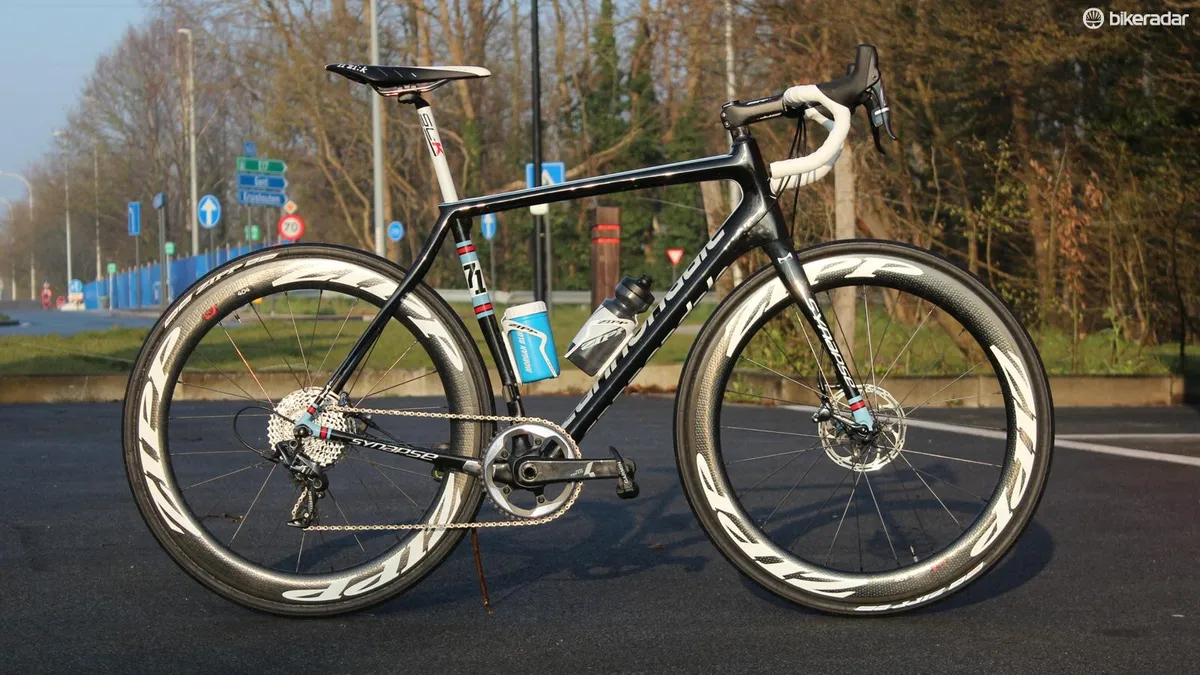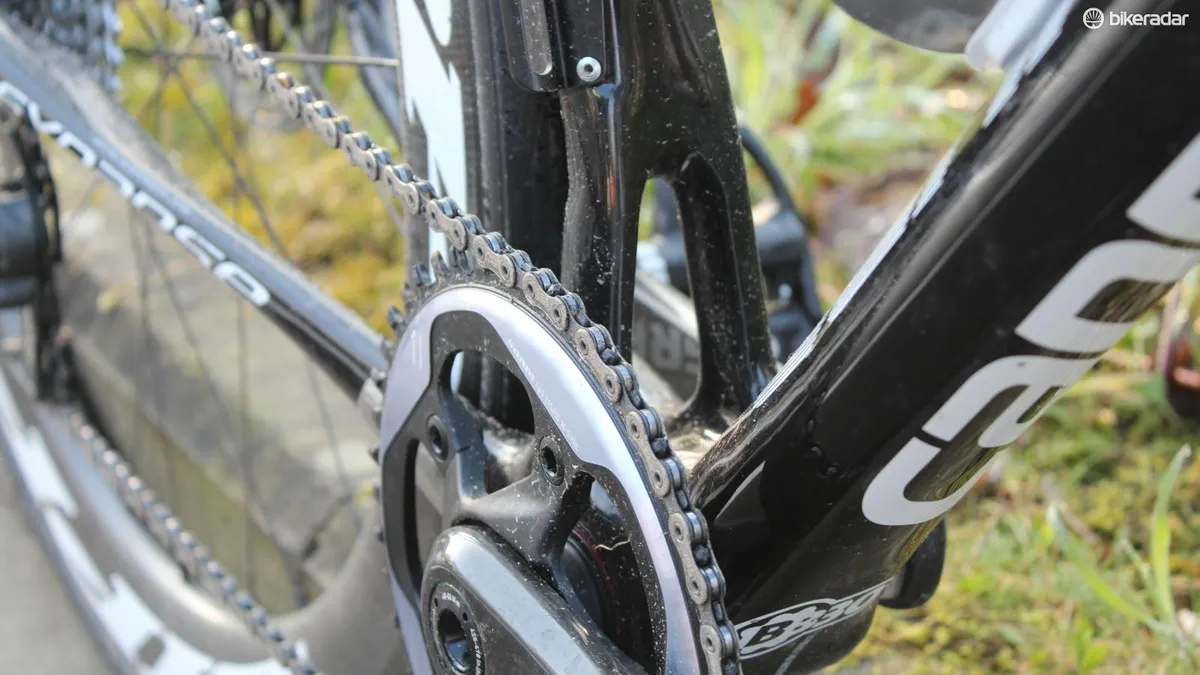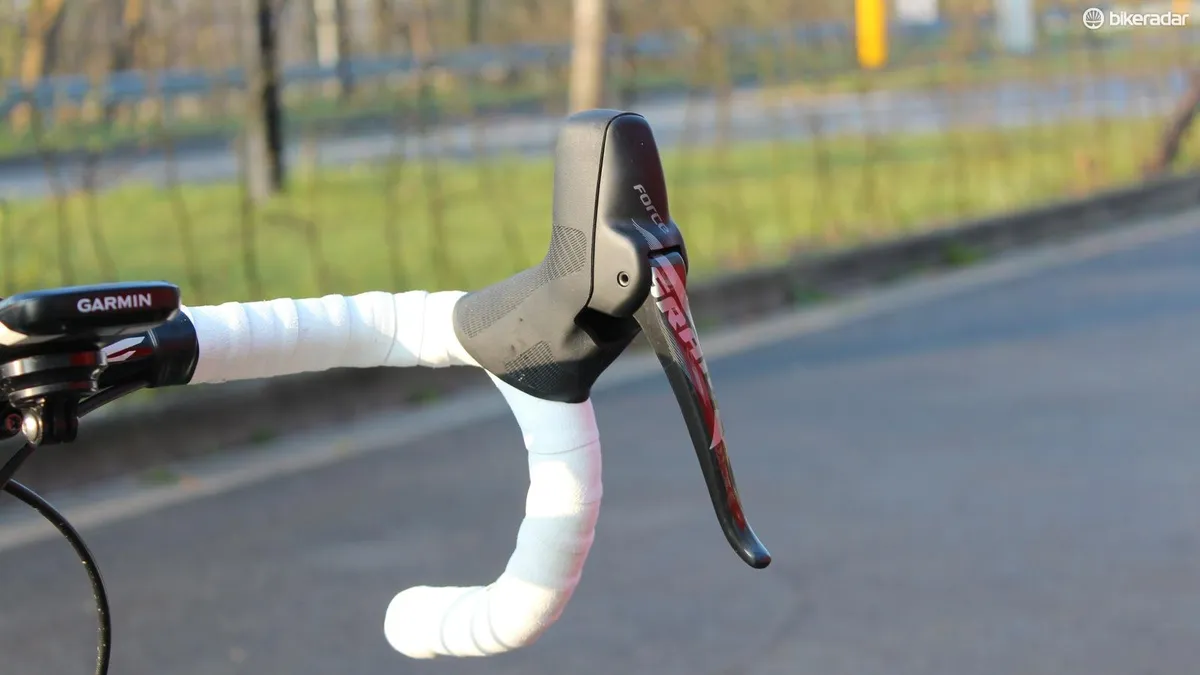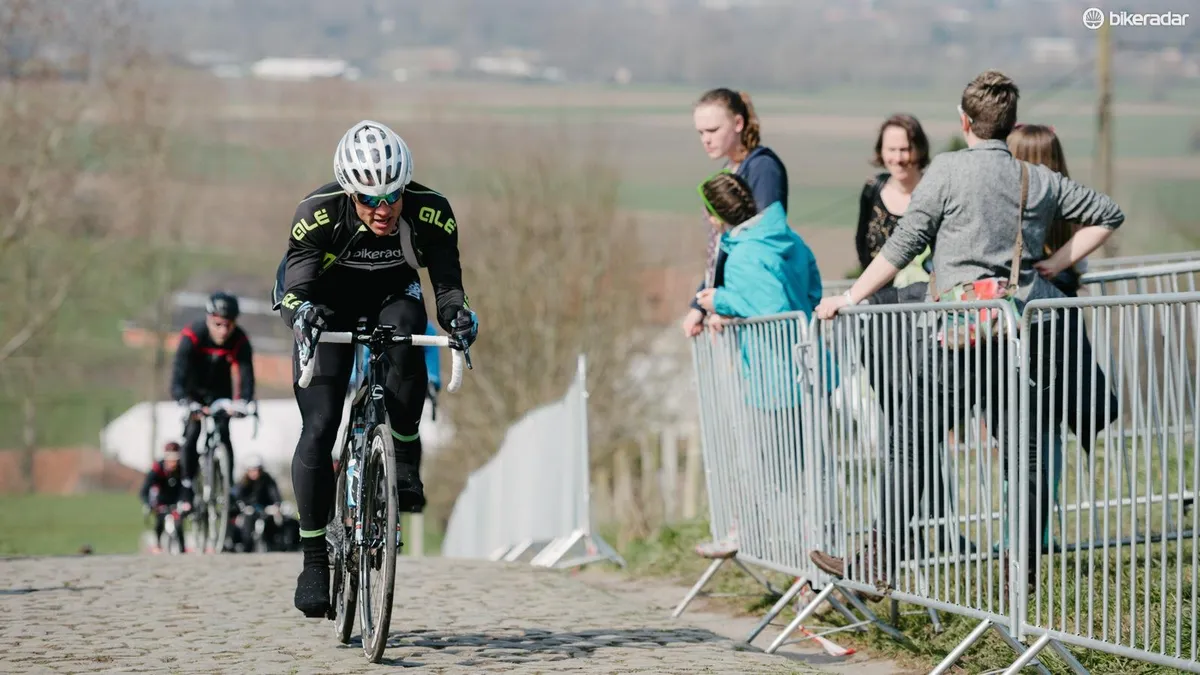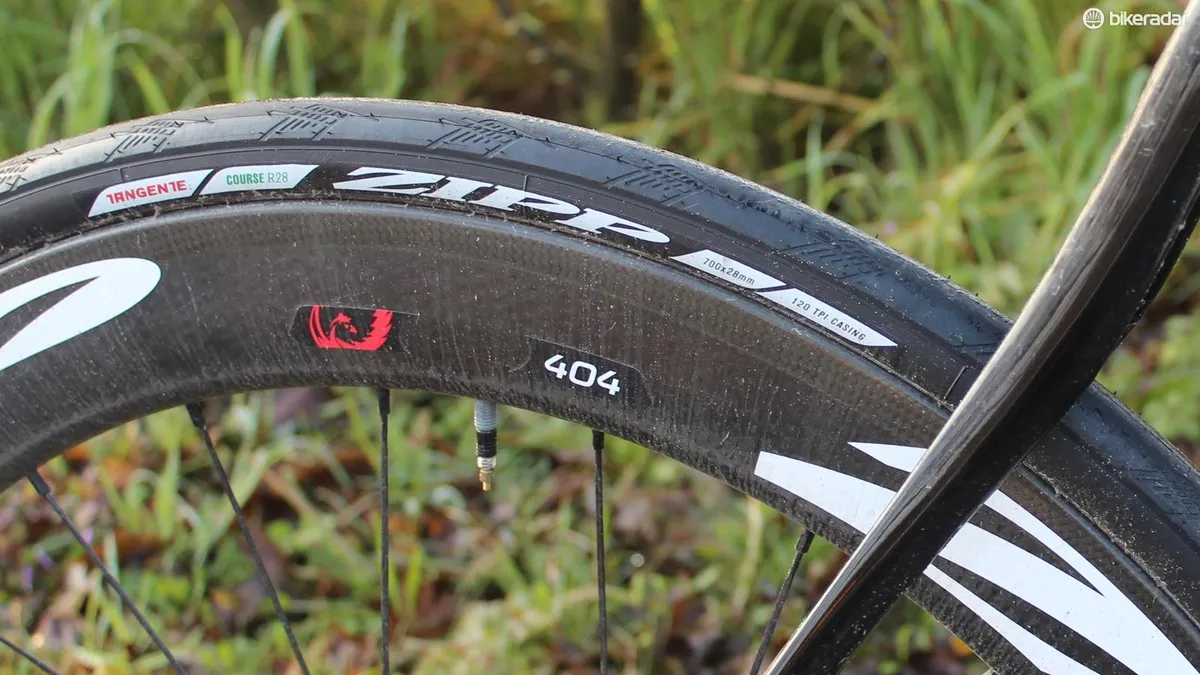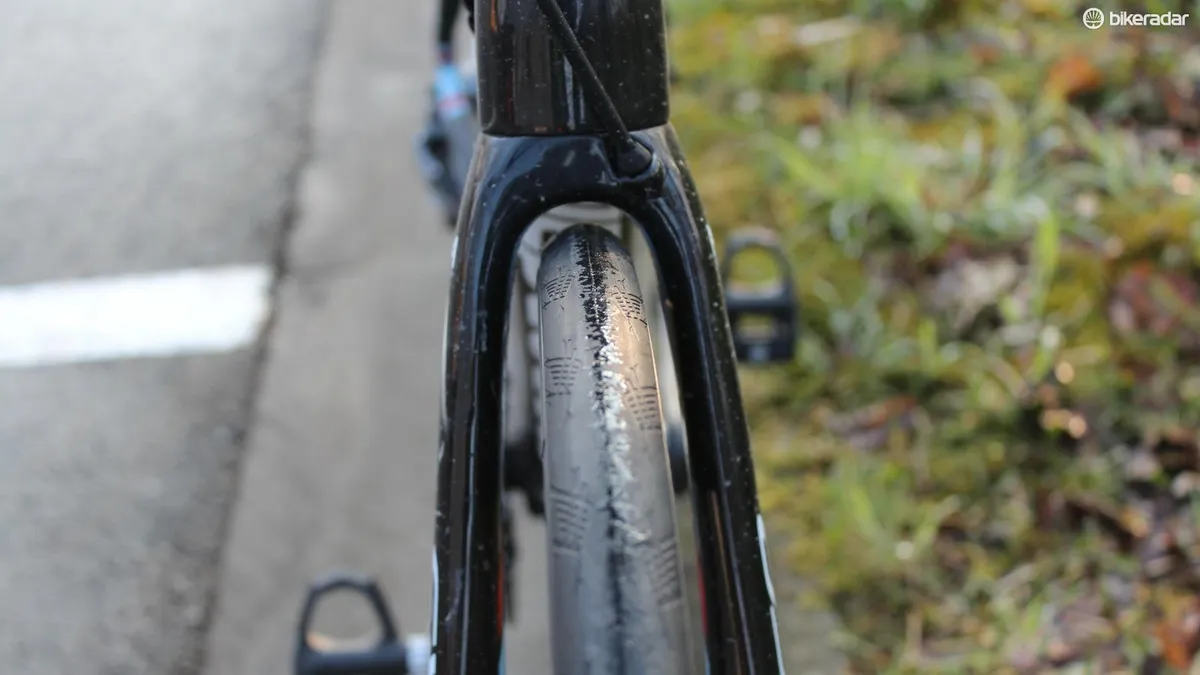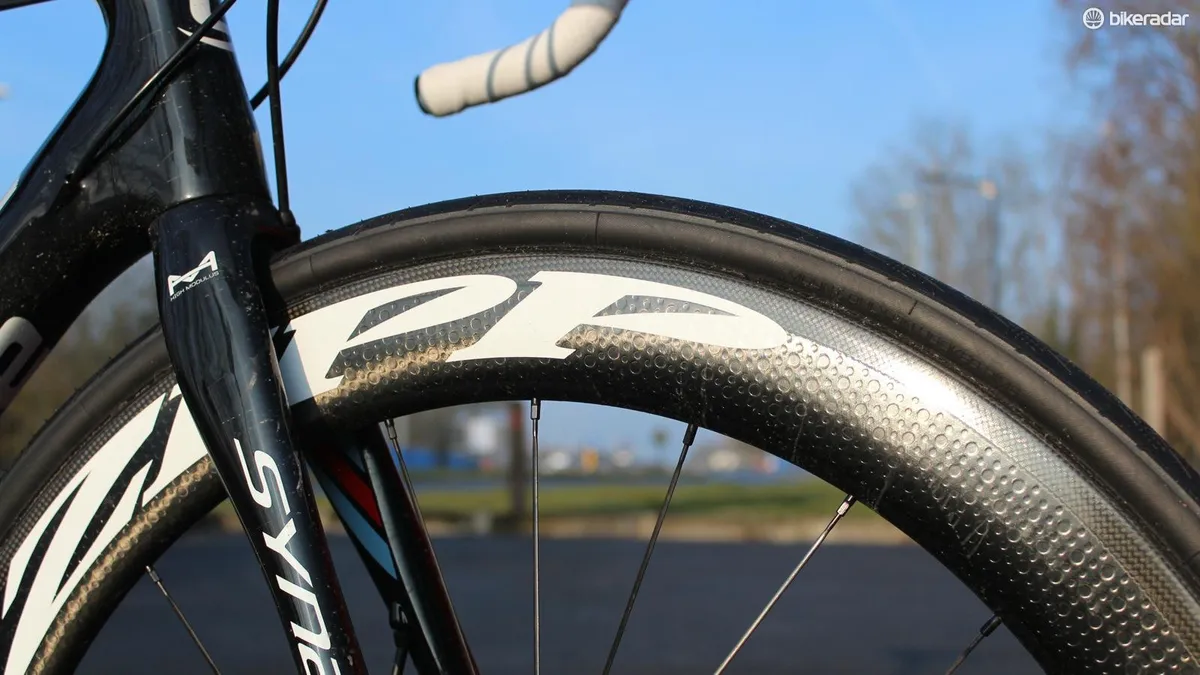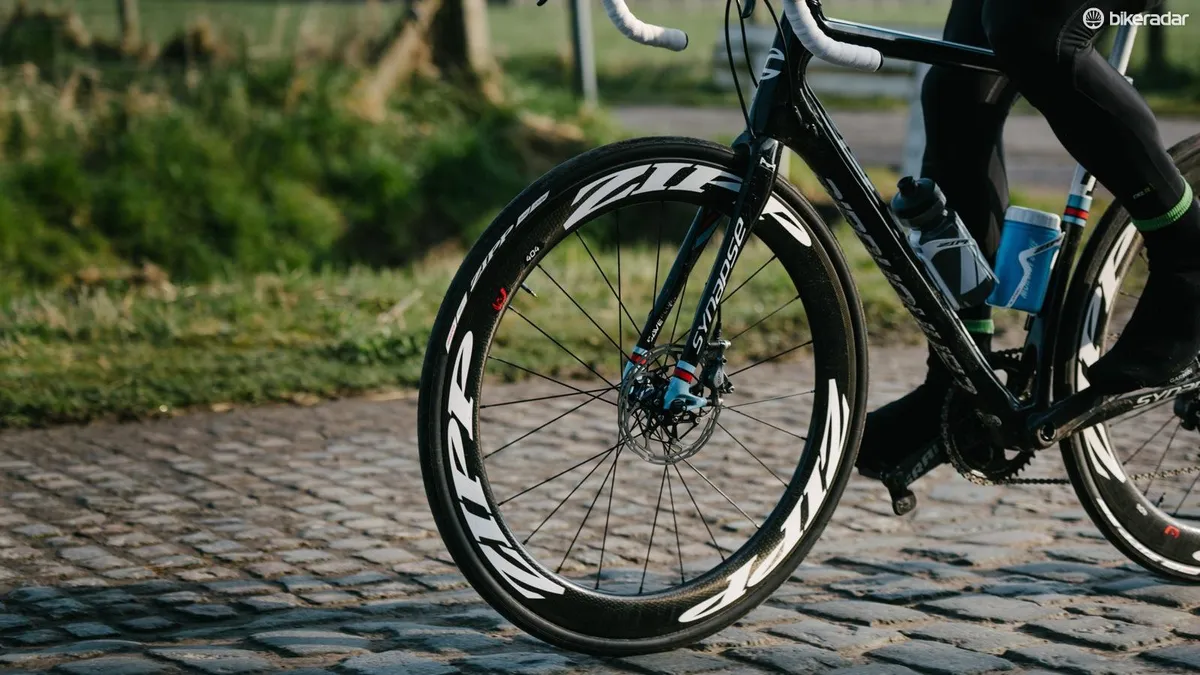Cobbled climbs that kick to 20%, often-horrible weather, some 16,000 participants and decades upon decades of cycling tradition — the Tour of Flanders Sportive is an incredible experience for any cyclist. I always jump at the chance to tackle the same stony bergs as the pros in the citizen’s ride, the day before the marquee event. But on a single-ring bike? It didn’t seem like a good idea.
To launch its new 404 Disc wheels, Zipp provided a few journalists with bikes built with sister-brand SRAM’s Force 1x group. I made a sour face and told SRAM’s road brand director Chris Zigmont I was skeptical.
For the record, I think ‘one-by’ makes good sense for certain 700c applications like cyclocross, city bikes and some so-called adventure bikes in mostly flat areas of the world. But to ride it on the slippery, steep climbs and subsequent descents and flats? I wouldn’t have picked it.
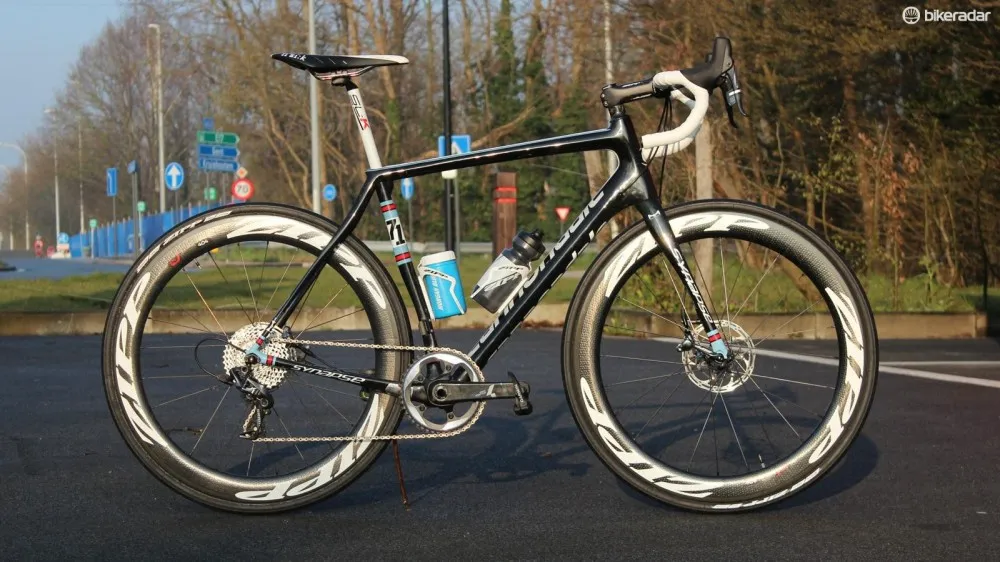
The Cannondale Synapse on the other hand seemed a sensible choice, with its bump-absorbing 25.4mm seatpost and longish endurance geometry.
And perhaps the most critical piece — the rubber. I was happy to see plump 28mm clinchers on the deep carbon hoops, which I wasn’t worried about. Zipp had a splintering start with its carbon wheels on cobbles a decade ago, but the Indianapolis company has reinforced and found success in recent years.
New-school tech meets old-stone tradition
De Ronde van Vlaanderen celebrated its 100th edition this year, and the preceding day’s sportive has been running for 25 years. Riders have three options: the full 227km course from Brugge to Oudenaarde, a 129kmm loop that takes in all the cobbled sectors or a 71km course that still puts you on the famous climbs like the Koppenberg and the Oude Kwaremont. We did the medium route.
Zipp, for its part, will soon celebrate its 30th year as a company. Ten years ago Zipp engineers first came to the cobbles of Belgium and Northern France — and broke a fair few carbon wheels in testing with Fabian Cancellara and Team CSC.
“When all the wheels were broken, it was here in Kortrijk (Belgium) that we started at ground zero to redesign,” said Zipp spokesman Dan Lee. “In 2009 we had some early signs of success. Heinrich Haussler was second that year on Zipp, when most everyone else was racing on alloy rims.”
From there, Zipp had the top of the podium for three years with its 303 wheels, with Cancellara in 2010, Nick Nuyens in 2011 and Tom Boonen in 2012.
The easy sell: Zipp 404 Disc and hydraulic brakes
While I hopped on the bike with a bias against 1x, I felt the opposite way about 404 rims and hydraulic disc brakes. I did the Flanders sportive last year in pouring rain on a disc bike with friends who had carbon rim brakes — and the difference was laughable. While the pros teams are still fretting over weight and logistics of discs (and with good reason for elite competitors), disc brakes for an amateur like myself are a pretty easy sell. They are simply better, especially in the wet. Grams matter for professionals; stopping reliably matters for sportive riders like myself among 16,000 of my brethren.
As for the rims, they were also a known and welcome quantity for me. I’ve done about 3,600mi this year, most of that in Colorado on 404 Firecrest, 404 NSW and other wheels of similar depth like HED Jet Black 6. I’ve been in enough wind tunnels and sat through enough technical presentations to believe in aero wheels. They’re faster. Plus, they sound and look cool, right?
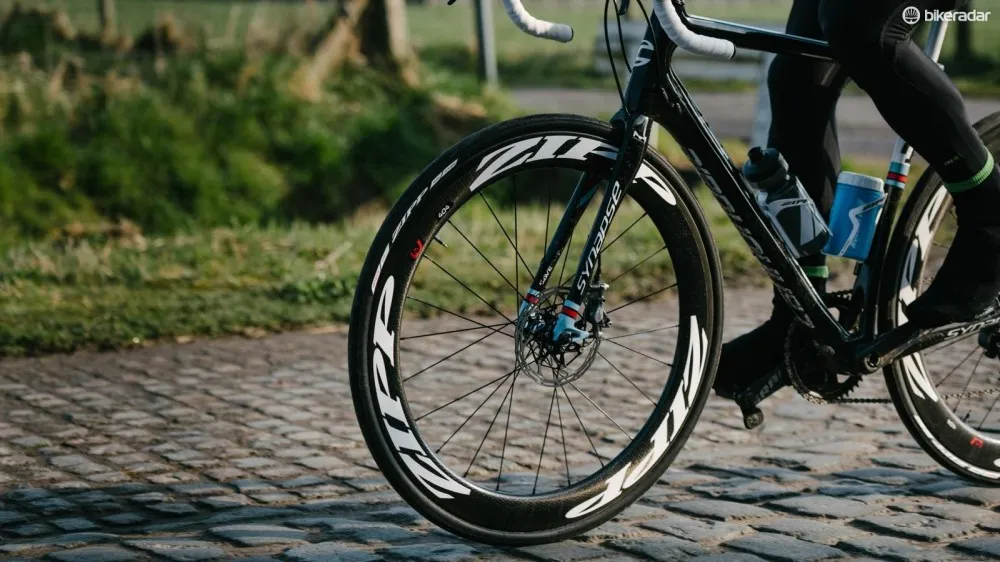
At Flanders, I couldn’t feel a weight penalty in spinning up to speed — or restarting on an uphill after friends tipped over sideways in front of me. At 1,715g for the set, it’s not like they’re heavy.
On the windy, exposed flats, the wheels were clearly an advantage. Sure, I could feel a bit of side pressure, but the advantage of a little extra speed over shallow wheels was well worth it.
Our little band of journalists did a recon ride the day before the sportive to get everything dialed in. The first time over some cobbles my hands started to burn from the vibration. What is going on, I thought? I pulled over and check the tires — which were rock hard, probably set at 100+psi. I let out about 30psi and proceeded — much better.
For the group of 15 or so of us, we had no flats on either the recon day or the sportive day, where often you don’t have a clean line of sight because there are so many people riding — so who knows what you’re about to hit.
The 404 and new 808 Disc wheels are interesting because they are clearly an aero-focused product, but the rotors and calipers are a slight aero penalty compared with traditional setups, according to bike companies and wheels makers alike. Zipp is betting that better braking will be worth the small compromise.
The hard sell: SRAM Force1x drivetrain
SRAM makes a massive 11-36 cassette for its 1x group on a standard wheel hub body, and an even bigger 10-42 that requires a special driver.
For the recon day, I rode a 46t ring with the 11-36. Without the mass crowds of the sportive, I was able to get over climbs like the Koppenberg (avg 9% / max 22%), and the Paterberg (avg 13% / max 20%), but it was a hard effort with the 46-36. I wanted something smaller on the low end.
For the sportive, I rode a 42t with the same 11-36 cassette. That felt much better for the climbs, but it would spin out on descents well before 30mph. I wanted something bigger on the top end.
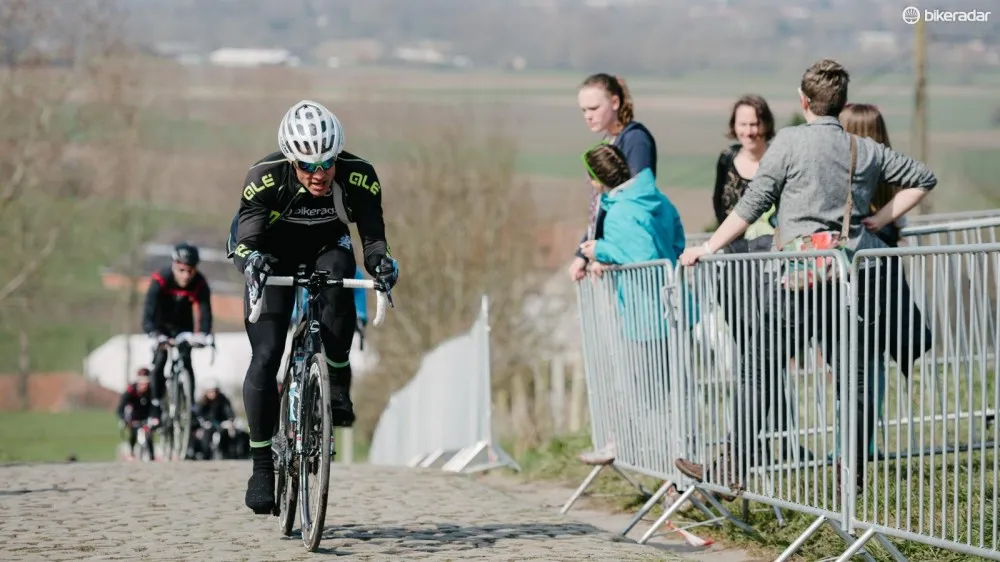
Two days later, I rode a Raleigh Roker with a SRAM 1x system with the Goldilocks setup: a 44t ring and a 10-42 cassette (which requires an XDR driver body). That arrangement finally felt like I had enough rope at both ends. The same gear was small enough to get up the steeps at a reasonable cadence and the top end was enough to push on gentle downhills.
In all three setups, though, there were big jumps between the gears, and I missed the ability to quickly dump or gain gears with the front derailleur, such as when coming fast into a steep climb like the Paterberg, or when cresting a hill and jumping onto a fast group.
On the plus, a taut chain on cobble was noticeable. Or should I say, the absence of chain slap was noticeable.
Also, I do admire the front half of the one-by minimalist aesthetic. A bare seat tube stripped of a derailleur and a single ring look cool — and are a lot easier to clean than a two-by system. The back end, to my roadie sensibilities, looks a little goofy, especially with a 42t cassette. That’s a lot of metal back there, balancing out the front end in terms of looks and weight.
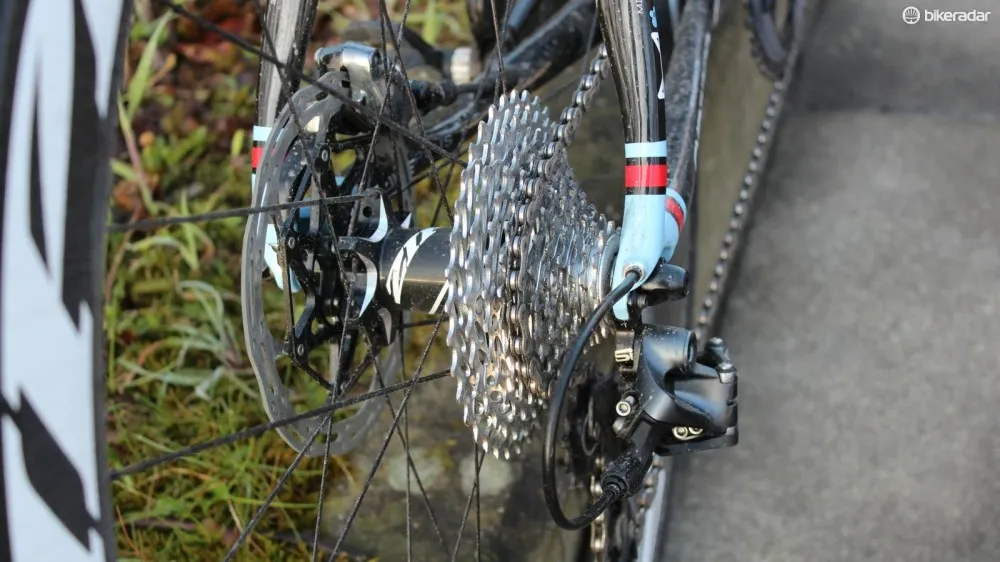
Bottom line, I still don’t see enough of a reason to switch to a 1x group on a standard road bike. I have never felt like I needed fewer gears when riding a 2x11 bike. I’ve never dropped a chain on the cobbles. I can see how for new riders, just having a single lever to shift ‘easier’ or ‘harder’ would be more accessible than worrying about gear ratios and trimming a front derailleur.
At Flanders last year, I rode a BMC GranFondo with a 50/34 and a massive 11-32 cassette. That gearing was great; I could spin up the Koppenberg and spin along the gradual descents and fast run-in to the finish.
Having the chance to ride 1x over multiple days on the Flanders cobbles was illuminating; with the right gearing it can be a decent solution.
And, riding side-by-side with riders on steel bikes with down-tube shifters, those on flat pedals and those on carbon superbikes, a simple tenet was reinforced: just getting out there on a bike — any bike — is the critical thing. I highly recommend the Flanders sportive if you ever get the chance.


